Dear Reader, in this age of AI created content, please support with your goodwill someone who works harder to provide the human-made. Sign up at the top of the lefthand column or bottom of this page. You will receive my hand illustrated monthly newsletter RESTORE NATURE and access to the biodiversity garden design course as I write...and nothing else, I respect your time. I am also removing the advertizing as best I can as its become intrusive inappropriate and pays me nothing.
Growing fennel is easy, and its benefits are many !
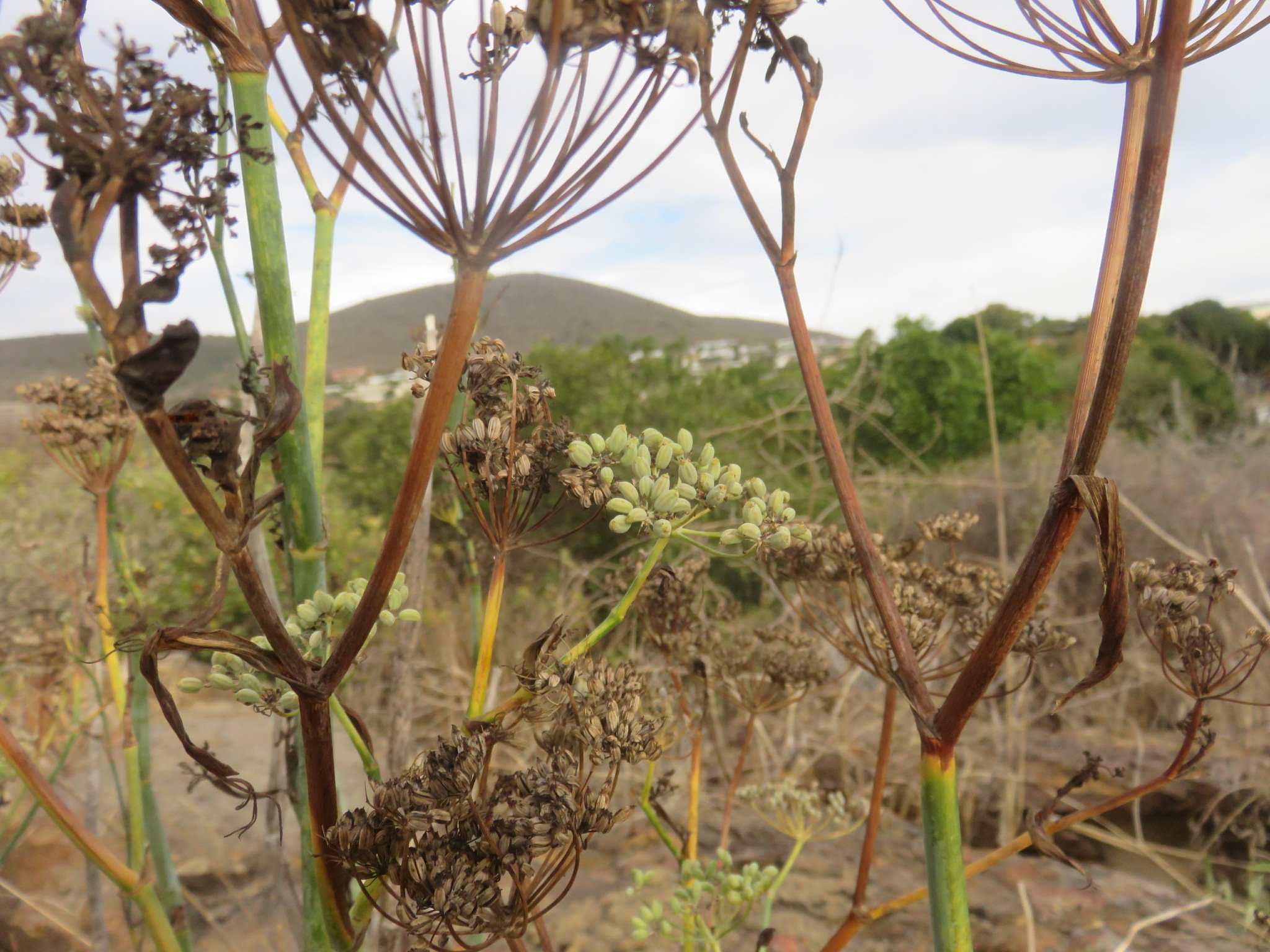 Growing fennel is made easy by the selecting tough wild seed.
Growing fennel is made easy by the selecting tough wild seed.Fennel is easy to grow and forms an attractive addition to a vegetable garden and to herb flavors in food. Wild fennel is added to Cretan style dolmades for instance. But there is more to it. In Cretan cuisine a lot of herbs are used, as well as greens collected in the wild, which are available at the vegetable markets. A few years ago I would have admired this use of wild herbs purely for the taste, or for its picturesque quality, whereas now I believe this is a pillar of the well known health and longevity of Cretans.
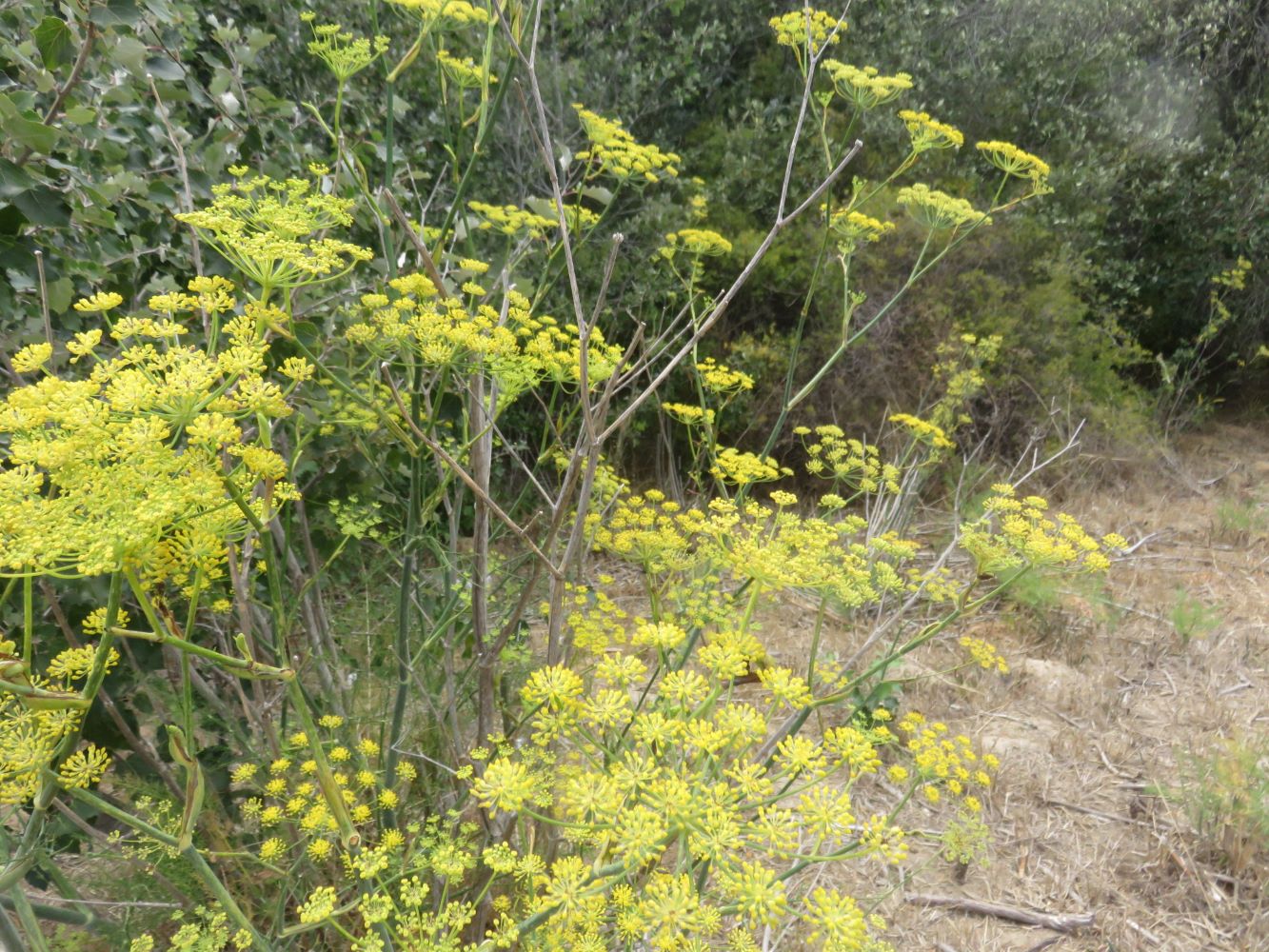 Worlds within worlds: naturalized fennel in our own wilderness houses a microscopic ecosystem of microbes
Worlds within worlds: naturalized fennel in our own wilderness houses a microscopic ecosystem of microbesWild plants and herbs and our gut
Each wild plant is gifted with a microbiome of its own, a set of microscopic organisms, mostly smaller than human or plant cells, which live on the surface of the plant. Our own gut microbiome interfaces directly with nature. Many of the microbes in nature and on soil are shared with our internal microbiome to make it healthier, more diverse and more resilient. Diversity is health in this dynamic, and we get that internal diversity from eating the right food and from contact with external microbiomes. Only a tiny portion of these microbes are pathogenic in nature, and most often, even these are kept under control through competition with the other microbes in a diverse gut microbiome. We need to feed our gut microbiome with prebiotic foods, as I explain in my article on healthy eating and we need to continually add to our microbiome with ferments or probiotics, and exposure to local soil and plant microbiomes. This is because a huge percentage of our metabolic functions, brain chemistry and so forth are dependent on the secretions of our gut bacteria.
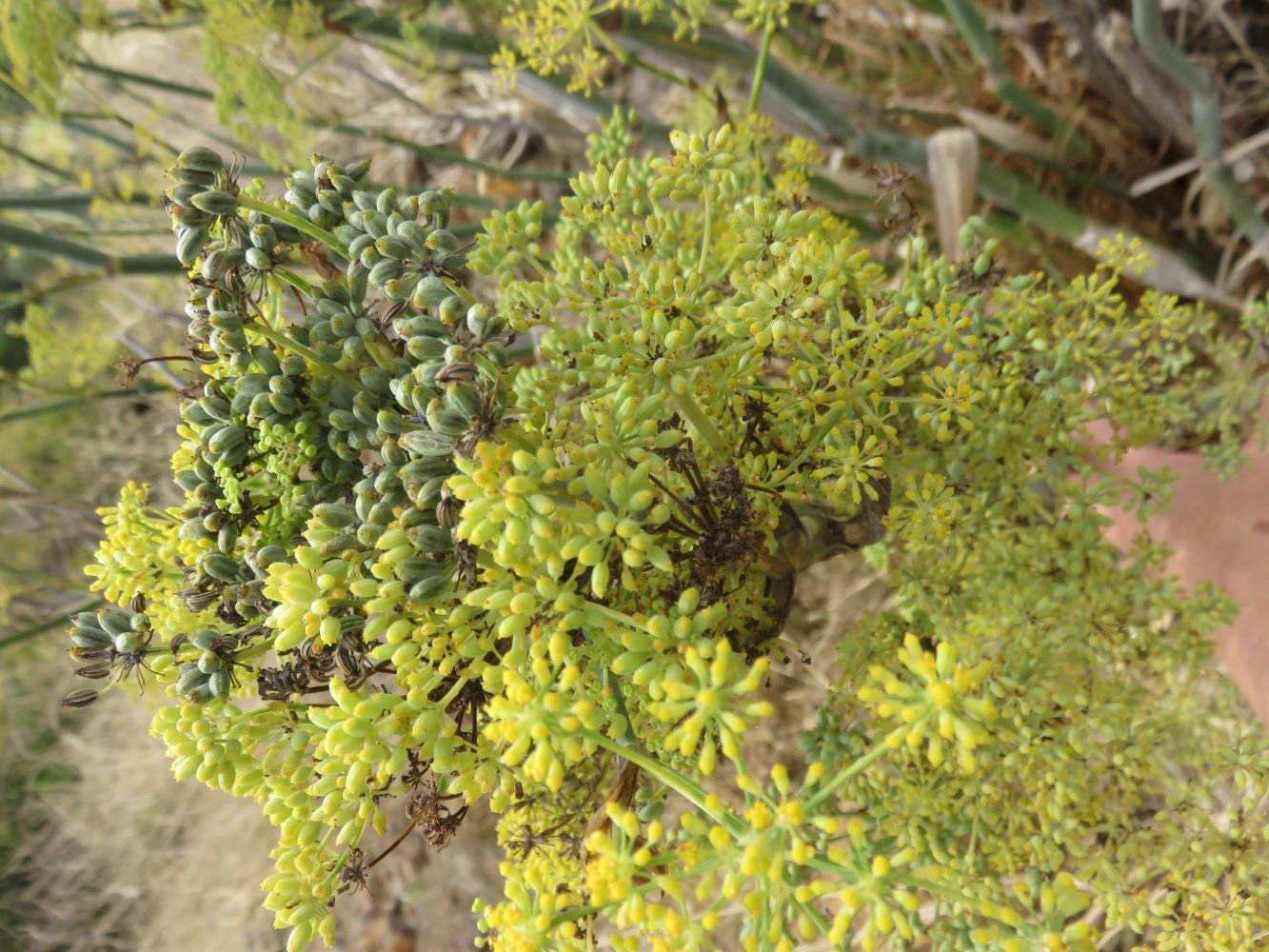
Growing fennel from wild seed
Back to Fennel. I like to gather wild strains of food plants if I can. This is because those that have become naturalized are usually tough, and they also have perhaps reverted to more ancestral forms which are richer in phyto-nutrients or plant chemicals. I gathered seed for growing fennel in a local arboretum where it is growing wild.
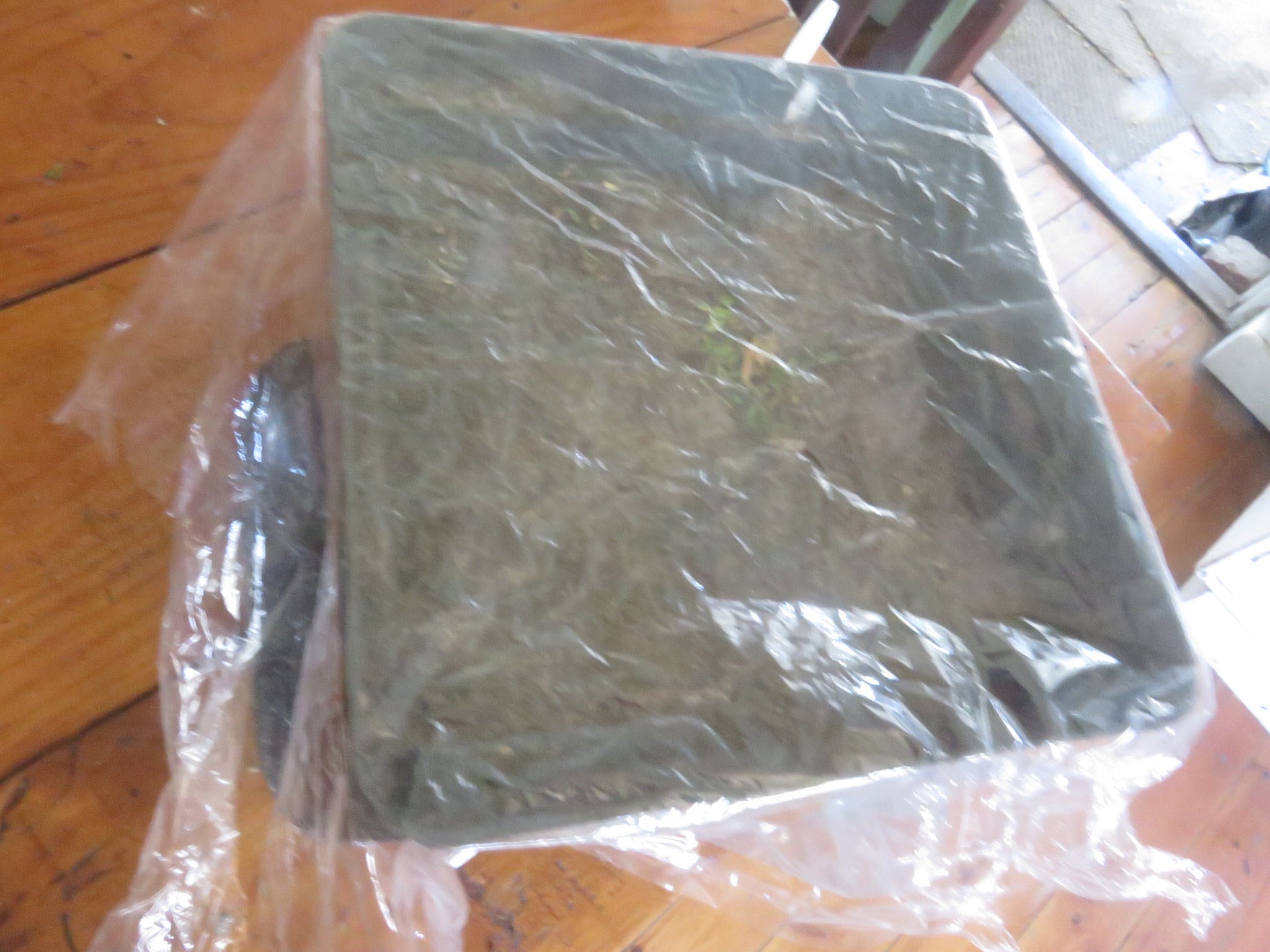 A simple plastic cover aids germination in growing fennel.
A simple plastic cover aids germination in growing fennel.I sowed the seed in one big pot, and covered it with a thin sheet of plastic cut from a bag. It came up 'like hairs on a dog's back' in due season of course, which was late summer here. We have a long winter rainy season that is not too cold and this would give it plenty of time to grow before planting out. Most of the green plants thrive in the cold rainy season here.
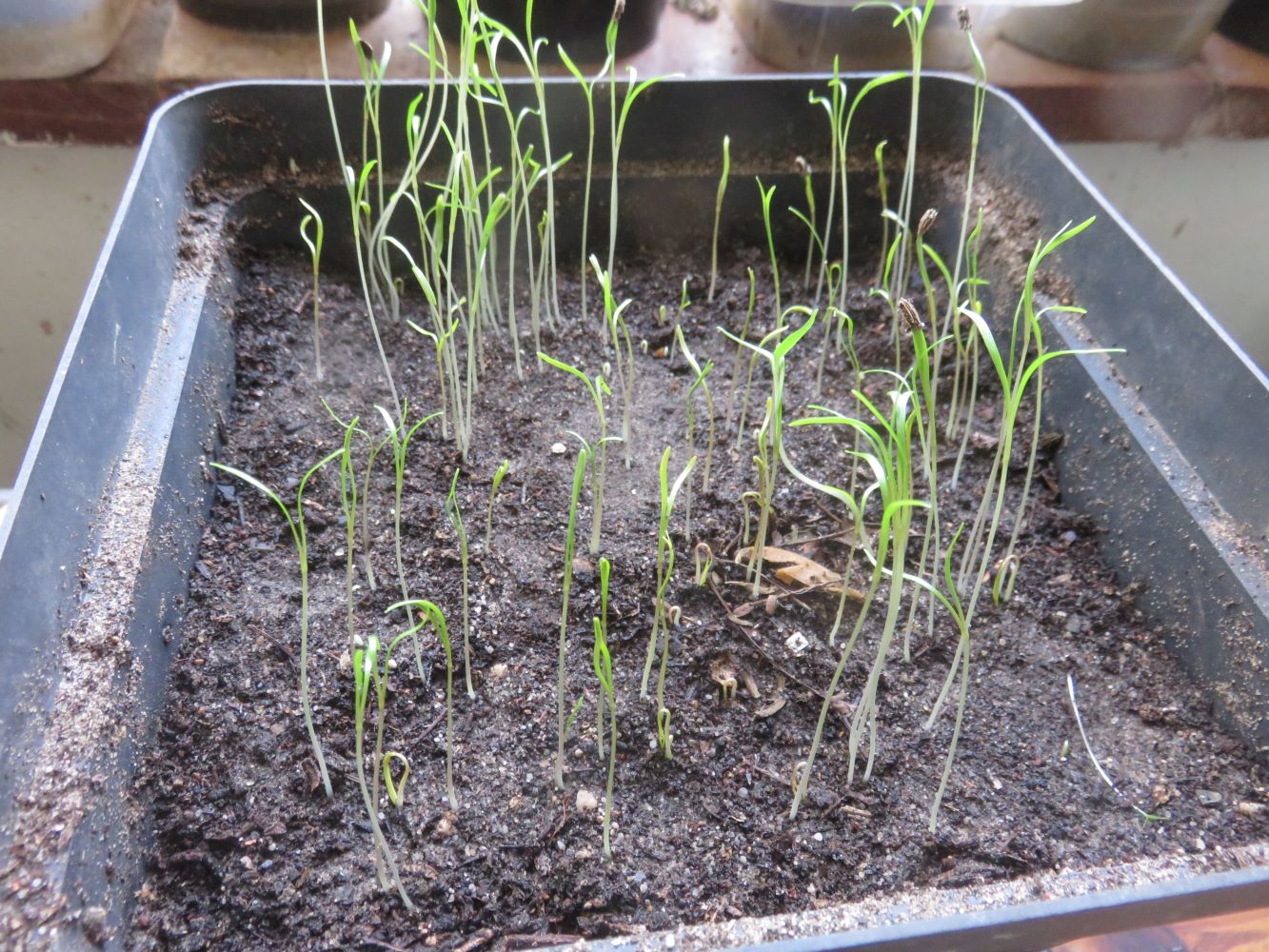 Germination is rapid and these seeds were fresh and very viable.
Germination is rapid and these seeds were fresh and very viable.Our climate is, or was, a warmish Mediterranean one. When the growing fennel seedlings were fighting with each other for space in the pot, a immersed the pot in rain water, separated out the seedlings and planted them up individually, in sixpacks. A few months later they went from the six-packs straight into the garden where they are doing well, and add a delicate frothy background to my mixed plantings of aromatic native fynbos plants, succulents and vegetables.
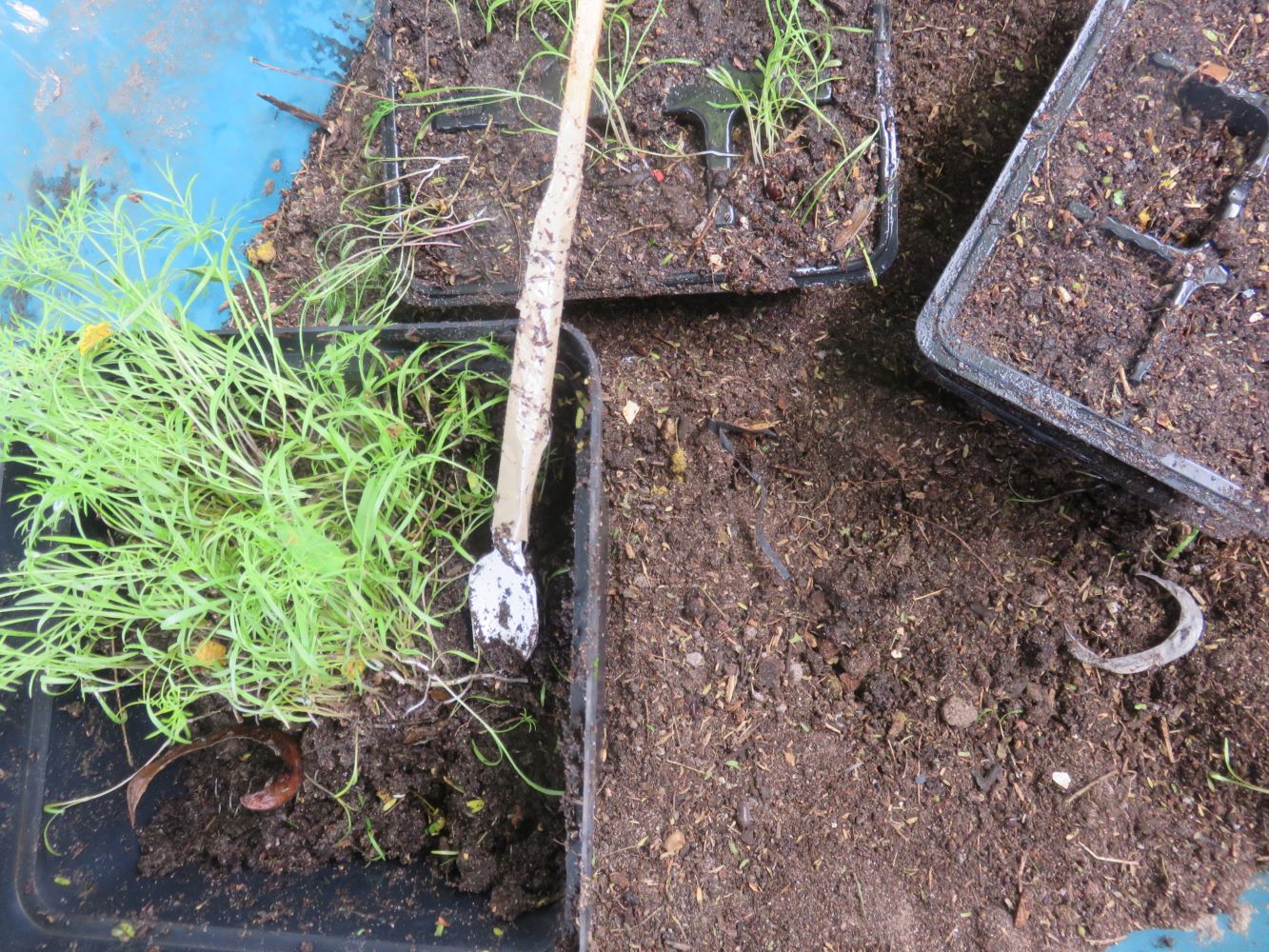 When the growing fennel gets too dense, plant pit in six-packs.
When the growing fennel gets too dense, plant pit in six-packs.Growing fennel in mixed plantings
I grow
my plants all mixed up for aesthetic and functional reasons. Mixed
plantings, interplanted with aromatic herbs, such as fynbos herbs,
confuses herbivorous insects, making their host plants harder to
find, so that they cannot just work along the rows and destroy the
lot, or so the theory goes in natural pest management. I also like
the wild look. Harvesting from this mix and caring for it is not a
problem. I continually add to it, and harvest from it, and I like the
fact that the earth is not naked after harvests.
If weeds are not invasive, I leave them, so that they can add to the microbial diversity on my food plants, keep the soil covered and act as indicators. Weeds are like litmus paper telling you about the nutrient status of your garden. I am also filling my garden slowly with perennial food plants, striving for a backbone of easy ones, interspersed with more difficult plants in the shelter provided by the tough ones, in a truly ecologically logical fashion.
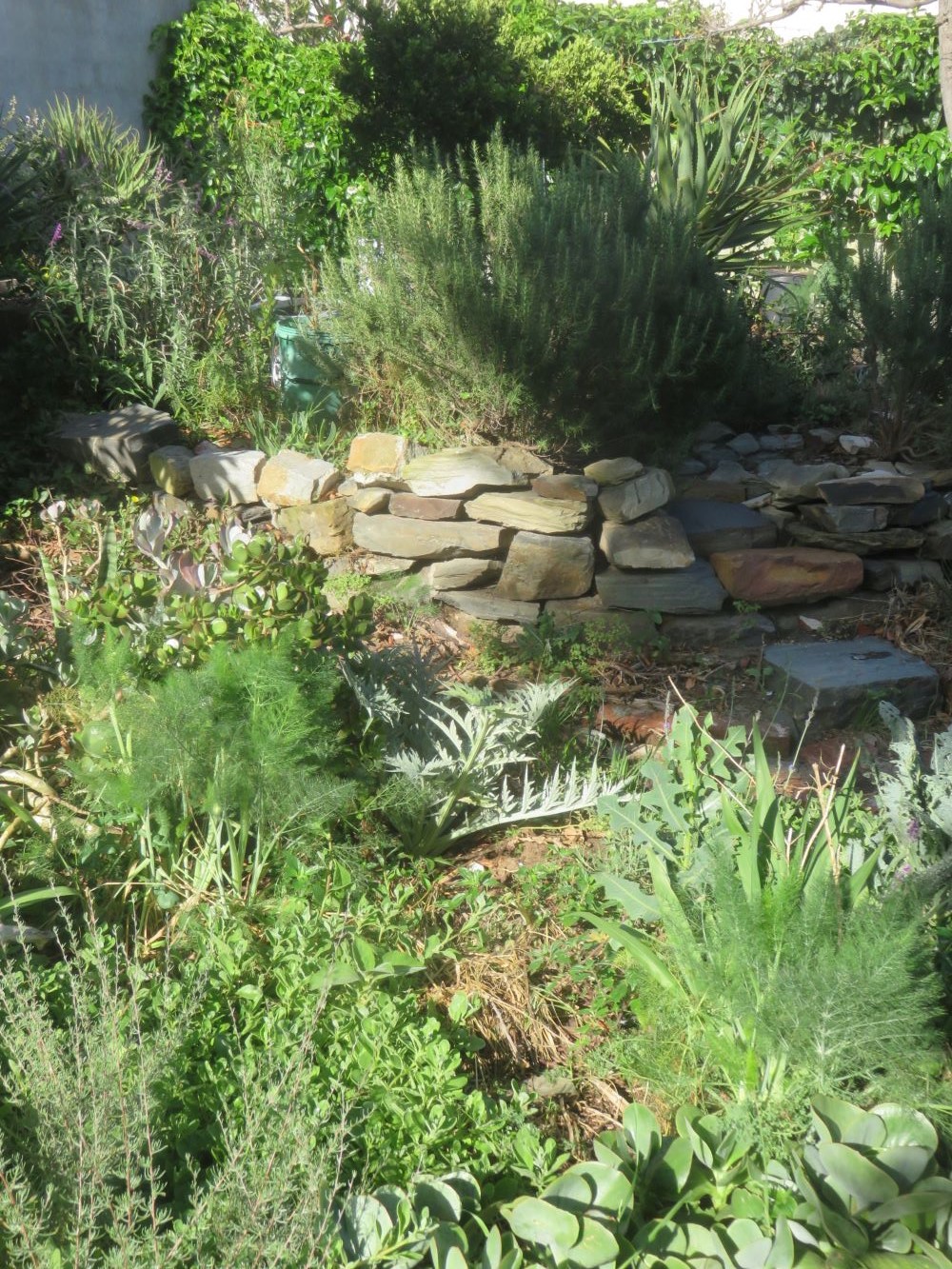 Planted out in mixed plantings fennel thrives.
Planted out in mixed plantings fennel thrives.Why growing perennials is eco-sensible and ecological
Perennials
require no digging and are therefore better for the planet. Perennial
food plants lead to better carbon sequestration than those requiring
tilling and digging. They are also of higher nutrient value
generally. Our annual food plants have had the nutrients selected out
of them while millennia of farmers selected for size and sweetness.
Cooking and enjoying perennial vegetables is a lost art however. We
have to relearn how to use them, as most of our vegetables are now
annuals. We have to garner tips from the cuisines of other
cultures who use perennial food plants. There is as lot to learn from
Meso-America, India and Africa, but rediscovery of the perennial delicacies of
the Mediterranean region is also needed, and fennel is a start.
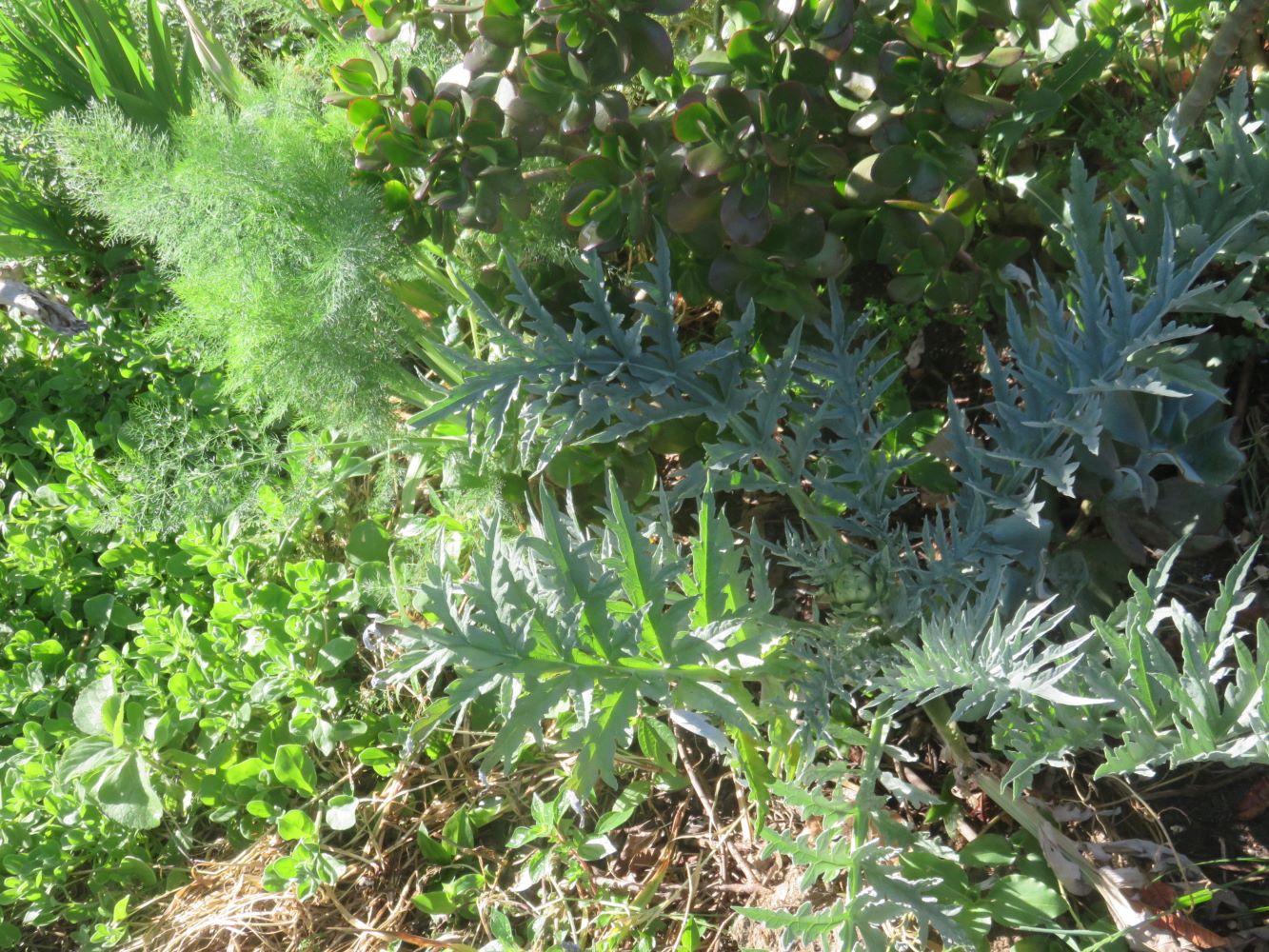 Fennel and artichoke are Mediterranean delicacies and perennials.
Fennel and artichoke are Mediterranean delicacies and perennials.Fennel is thought to have originated in the Mediterranean where it is important in the cuisine of regions like Italy, and the aforementioned Crete. Fennel fronds are chopped and used as herbal flavoring with fish, in dolmades, and my Cape version of this Cretan delicacy, salads and soups, the bulbs chopped raw and added to salads, or baked whole. There is nothing quite like a baked fennel bulb, it is in the league of vegetable delicacies like asparagus and artichoke hearts. That is a pretty good aesthetic reason for growing fennel. Fennel seed is used in baking and spice mixes in traditional cuisine across Asia and Europe and has found its way into tradition in the Americas.
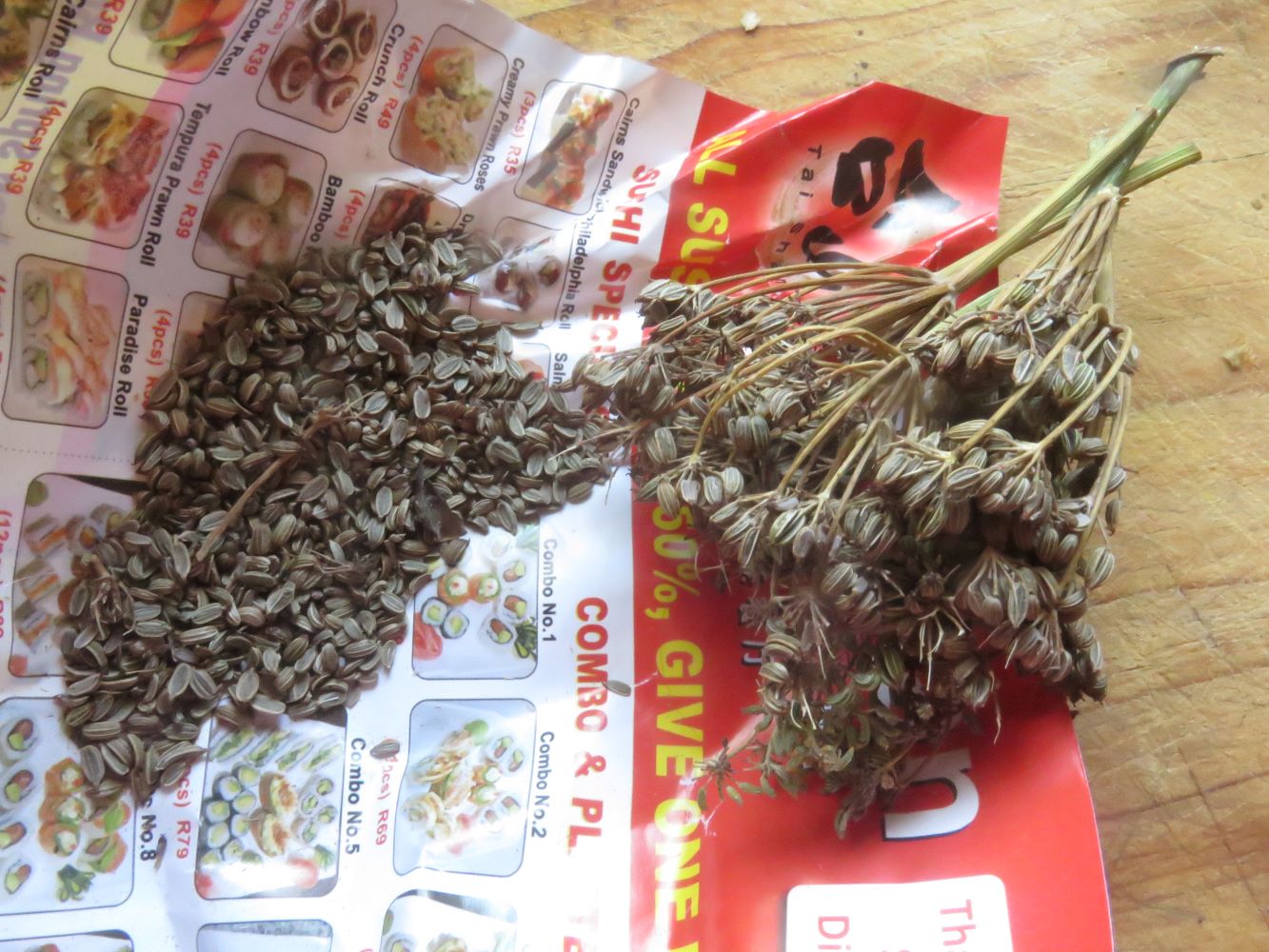 Fennel bears prolifically seed, with culinary and medicinal uses.
Fennel bears prolifically seed, with culinary and medicinal uses.Fennel's medicinal and magical uses have been numerous through the ages. The use of fennel was first recorded by Pliny, a roman doctor in the first century AD. In the middle ages it was imported by the British royalty, and congregations nibbled fennel seeds to stave off hunger during long sermons. Superstition marked gathering fennel as good and giving it away as bad luck, as well as keeping evil spirits at bay as winter descended. It is believed to induce milk production in most herbal medicine, and to help conjunctivitis and stimulate appetite in Chinese medicine. In Europe it was used to kill 'ear worms', help with weight loss, soothe sore throats, and it was used to spice fish, to combat the phlegm producing nature of fish, in the humor theory of medicine in the middle ages. It was also reputed to be an antidote to poisonous mushrooms, snake and rabid dog bites but I'd advise a visit to the ER in these cases.
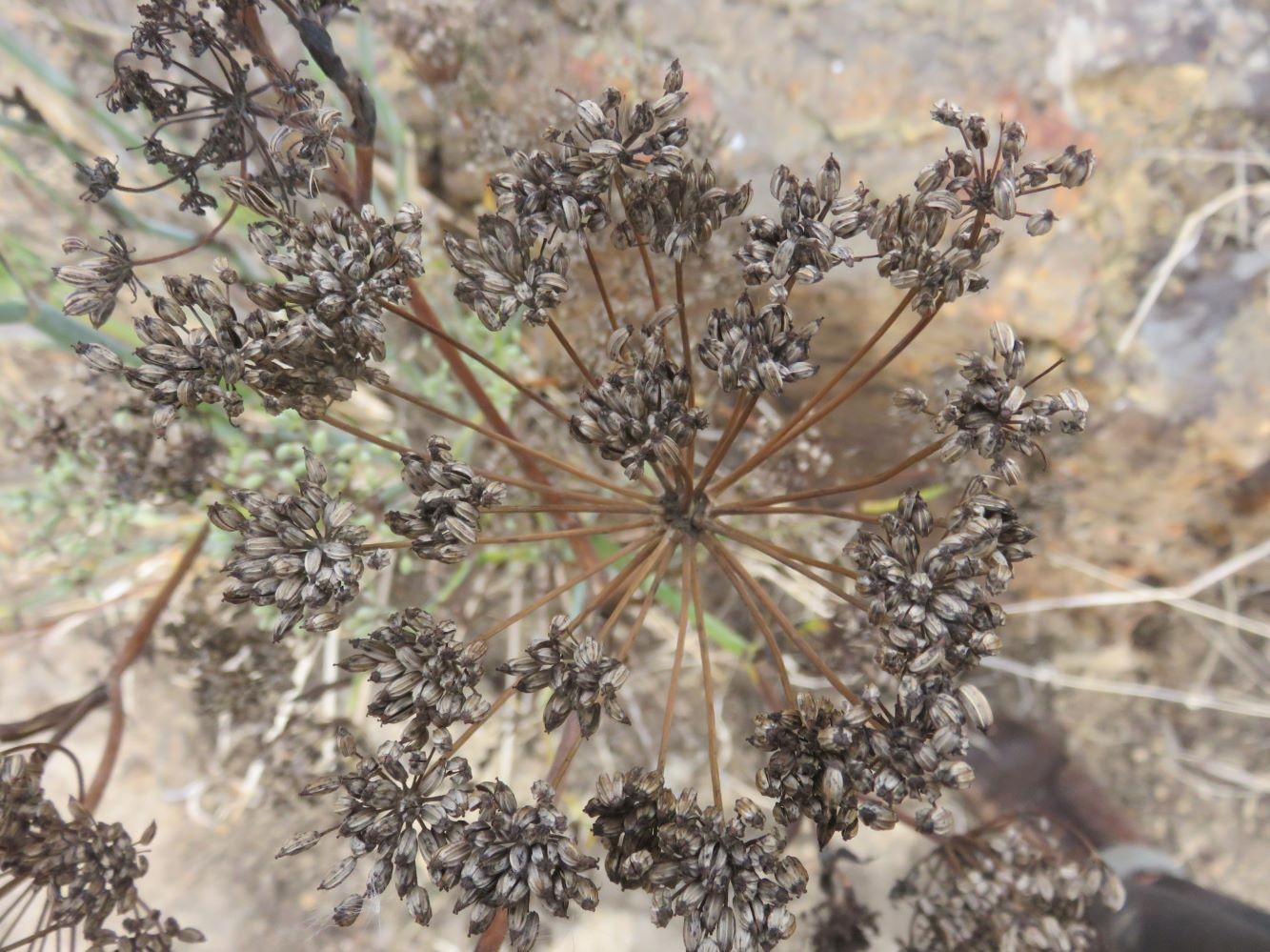
In our present scientific era fennel has been found to contain many beneficial nutrients and phytochemicals, such as vitamin C, folate and potassium, a swathe of other minerals and lots of plant fiber. The fronds contain many vitamins which are beneficial, such as pantothenic acid, B6, niacin, riboflavin, thiamin, and beneficial plant chemicals reputed, in plant medicine practice, to be life preserving, such as rutin, quercitin, kaempferol, and a volatile aromatic compound anethole which has a powerful cancer prevention effect through shutting down certain inflammatory pathways.
Growing fennel, a perennial herb, thus makes up a part of my personal carbon sequestration strategy, my health strategy because it adds diversity and potent phytochemicals to my diet, and pest management strategy in the garden, because of its strong perfume.
------
home page for all our links to articles on natural gardening
------
perennial food plants, their health advantages and carbon sequestrating ability
Restore Nature Newsletter
I've been writing for four years now and I would love to hear from you
Please let me know if you have any questions, comments or stories to share on gardening, permaculture, regenerative agriculture, food forests, natural gardening, do nothing gardening, observations about pests and diseases, foraging, dealing with and using weeds constructively, composting and going offgrid.
SEARCH
Order the Kindle E-book for the SPECIAL PRICE of only
Prices valid till 30.09.2023
Recent Articles
-
garden for life is a blog about saving the earth one garden at a time
Apr 18, 25 01:18 PM
The garden for life blog has short articles on gardening for biodiversity with native plants and regenerating soil for climate amelioration and nutritious food -
Cape Flats Sand Fynbos, Cape Town's most endangered native vegetation!
Apr 18, 25 10:36 AM
Cape Flats Sand Fynbos, a vegetation type found in the super diverse Cape Fynbos region is threatened by Cape Town's urban development and invasive alien plants -
Geography Research Task
Jan 31, 25 11:37 PM
To whom it may concern My name is Tanyaradzwa Madziwa and I am a matric student at Springfield Convent School. As part of our geography syllabus for this
"How to start a profitable worm business on a shoestring budget
Order a printed copy from "Amazon" at the SPECIAL PRICE of only
or a digital version from the "Kindle" store at the SPECIAL PRICE of only
Prices valid till 30.09.2023







